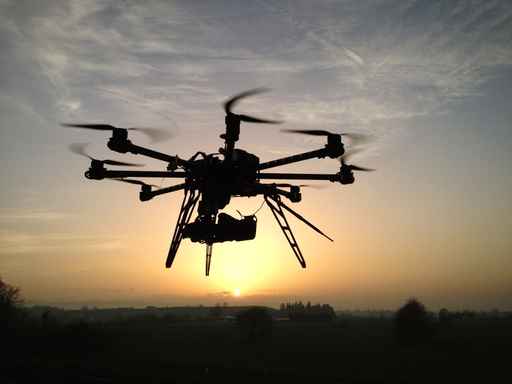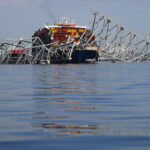Sometimes it takes a tragedy—maybe even two tragedies—to change a paradigm. But just as Houston and parts of the west coast of Florida will never be the same after the double disasters of Hurricanes Harvey and Irma in the space of just a few weeks, neither will the insurance business, which has “discovered” how effective drones can be during major emergencies.
Executive Summary
Two damaging hurricanes that made landfall in Texas and Florida this year may change a paradigm, according to Louis Ziskin, CEO of DropIn. With roads impassable, drones are a quick and easy way for insurers to get a full view of what customers are facing and to determine how much effort and money it will take to rebuild, he writes, also suggesting that the efficiency of drone-assisted claims handling can improve the industry’s reputation in the eyes of customers.Already in the midst of the storms and their immediate aftermath, drones are being used to assess damage, look for survivors and determine where repair crews for utilities need to be dispatched. AT&T, for example, is reportedly using drones to detect exact locations for damaged cellular sites that have caused outages for nearly 150,000 Internet, TV and phone customers; Verizon began using them already last October, after Hurricane Matthew. Power companies in both Texas and Florida have been using drones to scope out damage and assess how best to dispatch repair teams, according to local news reports. And the Red Cross has been using drones to provide emergency assistance to Harvey storm victims. (Source: Aug. 31, 2017 dronelife.com article, “Drone Industry Aids Red Cross in Hurricane Harvey Response,” describes FAA-authorized disaster response flights; see also, Sept. 7, 2017 press release from UPS, the Red Cross and drone-maker CyPhy Works, describing a public-private partnership to launch a drone pilot program in a one-week, on-site test—the first Red Cross test using a tethered drone to assess damage after a major natural disaster in the United States.)
With two major natural disasters in barely two weeks, any debate in the insurance business as to whether or not drones are an effective way to deal with claims should now be moot. As the clouds clear and the waters dry up, what is being left behind by these monster storms is the damage they have wrought. Initial estimates from the governor of Texas put the economic damage from Harvey at more than $150 billion, and analysts expect Irma to add tens of billions of dollars more. (Editor’s Note: Catastrophe modelers like RMS and AIR Worldwide put totals for insured and uninsured property and business interruption for Harvey in the $65-$90 billion range, while sources like AccuWeather, adding projected costs of lost jobs and increased consumer good prices, tallied Harvey figures closer to $200 billion.)
As people in the insurance business know, figures on storm-caused damage translate into heavy workloads as businesses, government and individuals look to their insurance companies for compensation. Each customer, of course, sees his or her case as being unique and important, but companies only have so many resources—a limited number of agents, adjusters, photographers and others who have to be sent out to examine the damage and determine what claims to pay and how much they are worth.
In the days after a major hurricane, the media is focused on the awesome destruction and how difficult it will be to rebuild; in the weeks after the event, the focus is on “feel good” stories of how people helped each other or otherwise ensured the safety and well-being of others. But a couple of months after the storm, the focus moves to how people who filed claims are still waiting for payouts. “Action 9 exposes delays in insurance claim payments,” reads one headline. Law firms, like one based in Houston, promise to expose “the Insurance Industry’s Delay, Deny and Diminish Mantra.” And so on.
While there are doubtless some unscrupulous agencies out there, the mainstream insurance companies won’t welch on their commitments. Still, the manpower and resource deficits that contribute to processing delays don’t interest people whose entire lives have been turned upside down and who are looking to their insurance payout to make things right again. And, of course, there is the extra expense involved in getting crews out into the field under challenging circumstances.
It’s understandable that customers would feel that way, but it still puts insurance companies on the spot. The bad PR makes insurance agents and carrier executives the people you want to stay away from at parties, always looked upon askance as unethical sorts who rob the widows and orphans of the world to enrich themselves.

“Once companies get into the habit of using drones, the sky’s the limit.”
Louis Ziskin, DropIn
(photo by Damon Kidwell, 71 Design Team)
Once companies get into the habit of using drones, the sky’s the limit. Floods, fires, car accidents and any other claim scenario would be handled, at least in the initial stages, by drones, with adjusters later evaluating the damage based on the images taken by drones. With this data, a framework for prioritizing claims can be set, ensuring they are processed as quickly and efficiently as possible—and with a significant cost savings.
Less time spent gathering claim data and photos—and less money spent on the effort but with better results—is the legacy the recent superstorms leave behind.





















 USAA to Lay Off 220 Employees
USAA to Lay Off 220 Employees  What Industry Executives Are Saying About Loss Reserves, Social Inflation
What Industry Executives Are Saying About Loss Reserves, Social Inflation  Electrical Issue Found in Ship That Caused Baltimore Bridge Collapse
Electrical Issue Found in Ship That Caused Baltimore Bridge Collapse  Progressive Gains as Drivers Shop Around for Auto Insurance—Again
Progressive Gains as Drivers Shop Around for Auto Insurance—Again 







